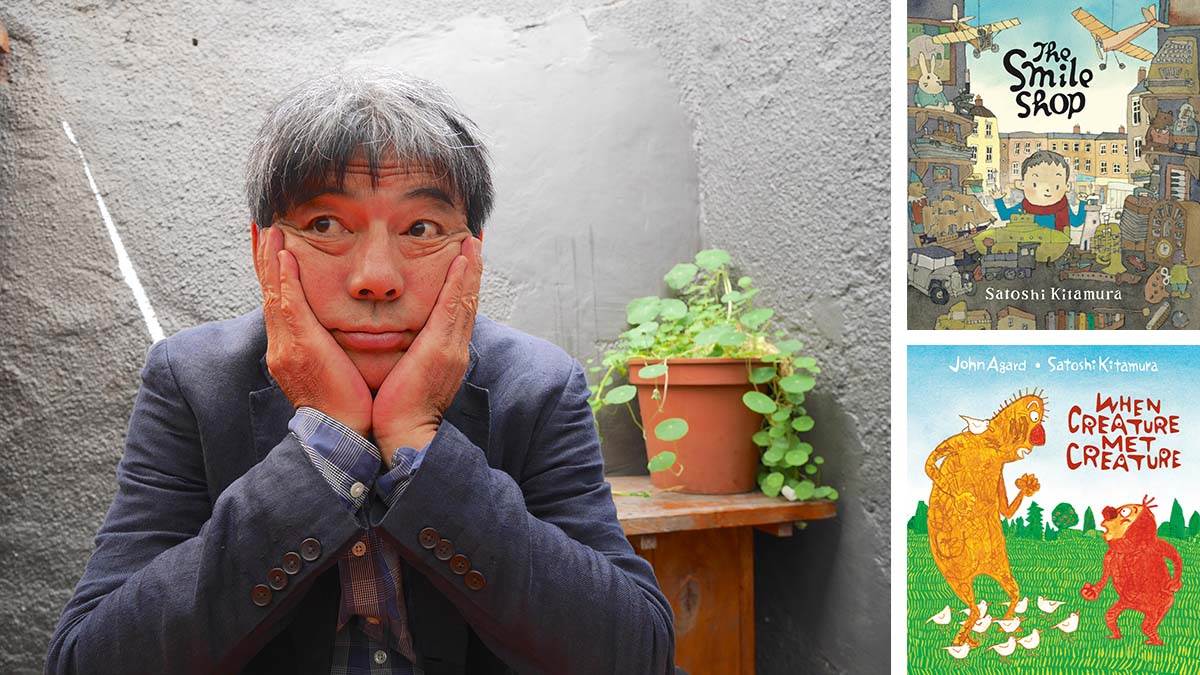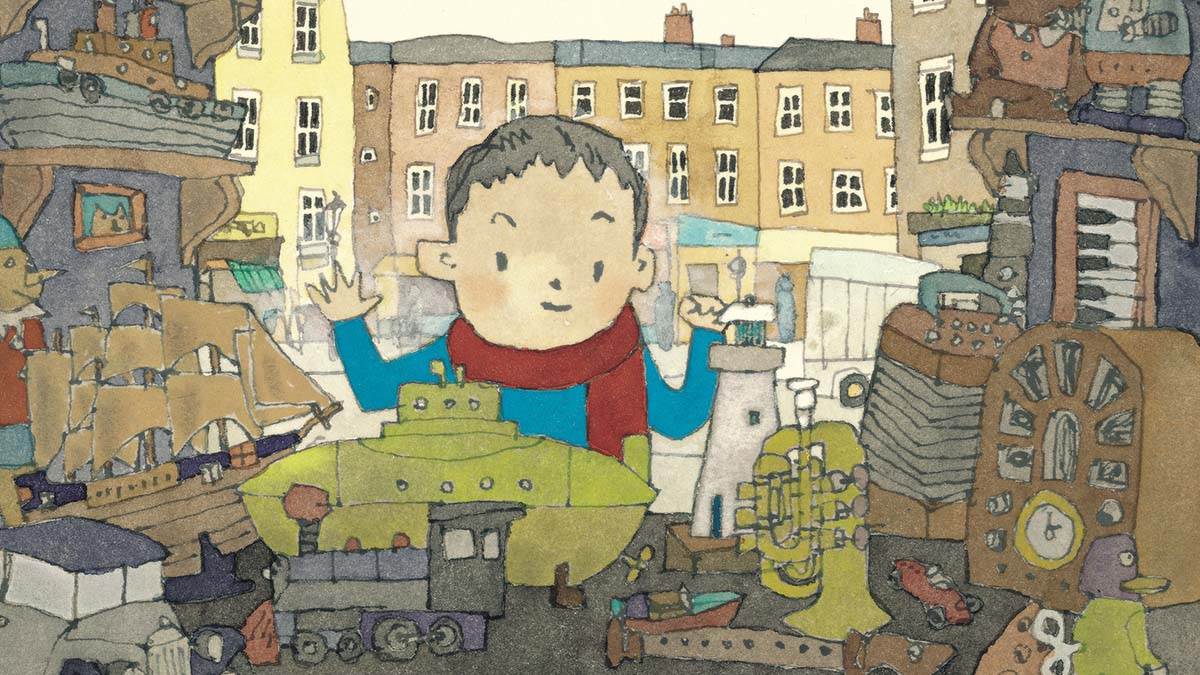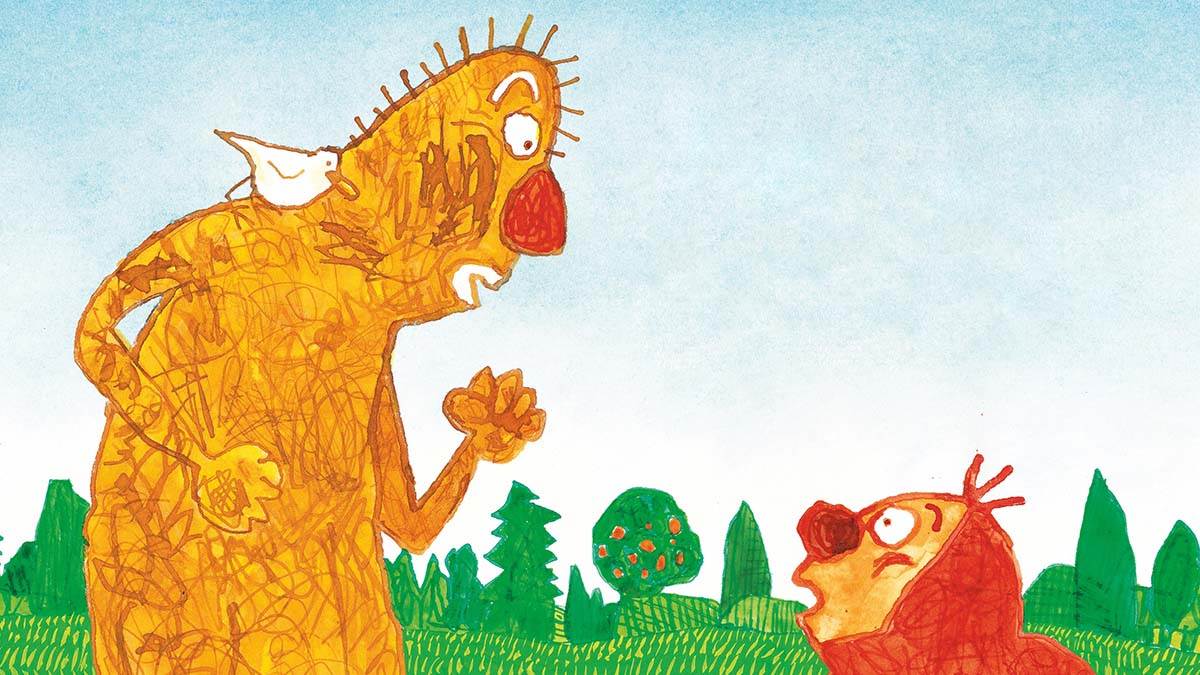What are pictures doing in a children's book?
Published on: 16 January 2024
Author-illustrator Satoshi Kitamura argues that illustrations are crucial for children.

What are pictures doing in a children's book?
They are usually called illustrations. And what is illustration?
'To illustrate', according to the dictionary, is 'to explain or make (something) clear by using examples, charts, pictures, etc.'
So in that sense, illustration is explaining the text and making it clearer. In some books, especially non-fiction books, illustration does assist the text and clarify it.
But in the case of picture books the role of illustration is completely different. Or perhaps 'illustration' is a slightly misleading word for picture books if it means something subordinate to text.
I know some people think the role of pictures is to serve the text. Children need pictures because their reading ability is limited. So, as children's reading skills improve, the spaces for pictures start to shrink until they disappear altogether. Now the child is fully literate.
Children's books are often used for this purpose, but when it comes to picture books - perhaps not all of them, but quite a lot of them - it is wrong to say that pictures are there to assist the texts.
Making words and pictures equal partners

In picture books the words and pictures are doing something quite different.
First of all, they are equal partners. Neither of them is master nor servant. They are indispensable to each other and together they form an organic whole. In a good picture book, both words and pictures are in equilibrium.
It's like a song. Music and lyrics need each other to make it a song that we sing.
How pictures in books spark creativity
I do workshops for children aged between 6-10. Over the years, I have done it in many different countries and have become aware of something in common in children. No matter their background, they are almost all good artists.
After I tell stories, I always ask them to draw. They do so enthusiastically and their drawings are spontaneous, vigorous, original and joyful. They are born artists. Wherever they are, in Latin America, India, Korea, Taiwan, Japan or the UK, they do it so brilliantly.
Occasionally, I do the same workshop for adults. They seem to enjoy it, but when it comes to drawing, most of them are not impromptu like children. Some look a little lost while the others try tentatively. Once I saw a lady looking for an idea from the internet on her mobile phone.
Many of them look as if they haven't done a single drawing since they left school. And the result of their art is, I'm afraid to say, not as good as children's. To be honest, theirs are far below the standard of children's. Does our development in art peak at age 9 or 10 and from then go downhill?
The age when children stop reading picture books and the age when they start losing the knack of drawing seem to coincide. I don't know whether there's a causal relationship between them or a pure accident.

Fostering children's visual literacy
Children's drawings are almost always vivid in colours and dynamic in composition. They do it so naturally without hesitation.
Are they more visually literate than grown-ups? They are often more observant than older readers when reading picture books. They notice small things that are tucked away in unexpected corners of the pages.
For the children of this age group, the world is still new and full of things to discover. Is that the reason why they are more sensitive visually? They read picture books not because the texts are shorter, but because they are as good at reading pictures as they are good at drawing.
I have been making picture books for so many years and never get tired of it because I always find it is fun to create a story with words and pictures together and, above all, I have such great readers who are also natural artists.
The Smile Shop and When Creature Met Creature by Satoshi Kitamura are both out now.
Topics: Picture book, Features





